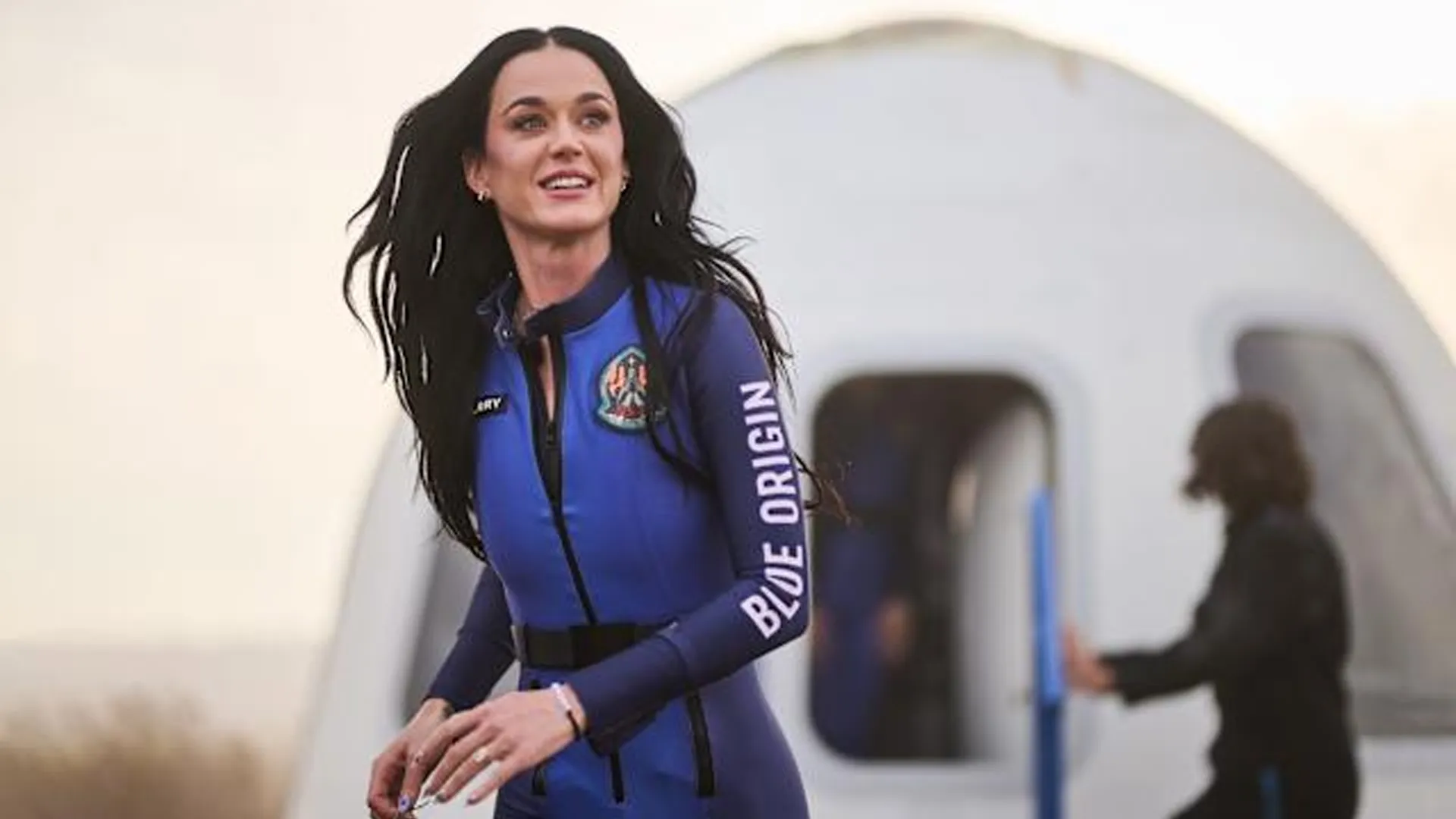On Monday, images of pop sensation Katy Perry giving the ground a peck of affection upon her return from outer space made headlines worldwide. The artist, along with five other women, rode an 11-minute trip on a Blue Origin spacecraft belonging to Amazon billionaire Jeff Bezos. The flight was a historic achievement as an all-female crew set foot in space aboard the New Shepard rocket.
“It’s a 10 out of 10. That’s my review. Go for it,” said Katy Perry after safely returning to Earth. The crew also included Bezos’s fiancée, Lauren Sanchez; TV host Gayle King; civil rights activist Amanda Nguyen; film producer Kerianne Flynn; and entrepreneur and former NASA rocket scientist Aisha Bowe.
The moment has inspired thousands around the globe to ask the same question: “When will it be my turn to go to space?
A Brief But Historic Journey
Blue Origin’s New Shepard spacecraft flew the six women above Earth’s surface, including Pop star Katy Perry, at more than 100 kilometers above the internationally recognized Kármán line — space’s edge. The brief suborbital trip included the moment passengers could see and feel the breathtaking sight of the planet in space, with moments of weightlessness.
Only eleven minutes later, the crew returned to Earth, stunned by what they had witnessed. “I don’t even know what I saw,” Gayle King recounted, calling the scene above “oddly quiet” and “peaceful.”
You look down at the world, and you think, ‘That’s where we came from?’ To me, it’s such a reminder about how we need to do better — be better,” she said. “I’ll never, ever, ever forget it.”
The successful flight puts the number of individuals launched into space by Blue Origin at 52 since it started crewed missions in 2021.
Space Tourism: The New Frontier
The success of this female-only mission confirms the exploding popularity of space tourism. Since Jeff Bezos also participated in the first flight in 2021, Blue Origin has established itself as a leading force in the space tourism industry.
In 2022, Star Trek actor William Shatner, at the age of 90, became the oldest individual to journey into space on a Blue Origin rocket. Elon Musk’s SpaceX has also taken space tourists into orbit, including celebrities and billionaires.
These missions reflect how space tourism is fast transitioning from science fiction to a commercial reality. A NASA report in 1997 anticipated the space tourism industry could generate billions, a projection that aligns with a Japanese study estimating it could become a $10 billion market within two decades.
Types of Space Tourism and Key Players
There are now two primary forms of space tourism: sub-orbital and orbital. Sub-orbital flights, such as the Blue Origin flight, fly passengers just beyond the Kármán line and bring them back to Earth after a brief few minutes in space. Orbital tourism, on the other hand, takes one much farther from Earth and spends much more time in orbit.
The three top firms in this burgeoning industry are Blue Origin, Elon Musk’s SpaceX, and Richard Branson’s Virgin Galactic. While Virgin Galactic has flown just 37 individuals, including 23 paying customers on seven commercial flights, Blue Origin has taken 52 individuals on 11 sub-orbital flights — earning it a significant edge in this new market.
The Cost of Reaching the Stars
While the hype is building, space travel is still a privilege of the rich. Although Blue Origin keeps ticket prices confidential, interested applicants need to deposit $150,000 (₹1.28 crore), which is refundable. During its maiden crewed mission in 2021, a seat was sold for a whopping $28 million (₹241 crore) in an auction.
A Blue Origin representative explained to CNN that “some passengers” on the flight of April 14 flight flew “free of charge,” while a few paid disclosed sums of money. The space travel website SpaceVIP co-founder Roman Chiporukha said, “It’s not about money; it’s about who you are, your social capital, whether you fit in with their purpose of launch. It’s more or less package deal.”
There are other space tourism ventures that carry hefty price points as well. Virgin Galactic, for instance, costs $450,000 (₹3.85 crore) for a 90-minute sub-orbital flight, while Space Perspective provides a six-hour trip to the stratosphere for $125,000 (₹1.07 crore). Axiom Space provides a 10-day mission to the International Space Station at $55 million (₹474 crore).
The Future of Space Travel
Though these costs render space travel inaccessible to the vast majority of humans today, specialists assume that prices will decrease as the technologies mature and competition grows. According to Koji Yamanaka, head of Japan’s space exploration center, “The initial phase will be millionaires or billionaires who will venture there, but the cost of travel will reduce. Ultimately, ordinary people will venture to the Moon as tourists, but I do not know how long that will take.”
The $848.28 million worth of the space tourism market in 2023 has already reached $1.3 billion in 2024. The industry, as estimated by Research and Markets, will grow to $6.7 billion in 2030 at a 31.6% growth rate.
As more celebrities, such as Katy Perry, board spaceships, public interest in the last frontier keeps on rising. Though space travel is still a fantasy for the majority, the day when common people can purchase a ticket to space is slowly moving towards reality.























